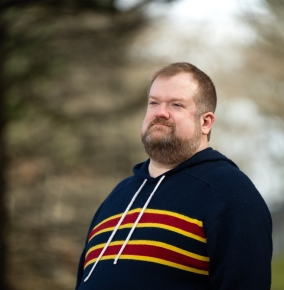Benjamin Evans

When did you join the Laboratory and what projects do you work on?
I joined in 2008 after getting my MEng in electrical and computer engineering at Cornell. I knew I wanted to work on challenging signal processing problems in support of national defense and was impressed by the collaborative environment at the Laboratory.
I split my time between developing algorithms for submarine sonar systems and leading an internally funded effort with the goal of creating a lower-cost, easier-to-deploy sea ice sensor node to further our understanding of the physical processing contributing to sea ice loss.
What project have you enjoyed working on the most?
That’s a tough question. I love my bread-and-butter acoustics work. One of the fantastic aspects of being a Laboratory employee is that there are opportunities to work on a wide variety of projects. MEDIC, a multi-modal approach to the detection of mild traumatic brain injury, and my sea ice monitoring work are good examples of those opportunities.
Have you participated in any STEM activities?
Science on Saturday, SeaPerch, the USS Massachusetts Commissioning Committee, and an eighth grade field trip onto the Arctic sea ice. Teaching younger people about acoustics, the ocean, and the Arctic — or really about anything that piques their curiosity — is remarkable. Their excitement is contagious and, I hope, may help set them on a course to pursue a career in a STEM field.
What are your future goals?
I think there are a number of ways the Laboratory could bring its expertise to bear on problems faced by the Arctic community, from developing novel sensors to solving system analysis problems. I’ll be working hard to find those opportunities and grow our Arctic expertise while growing the Laboratory footprint in the Arctic.
Do you have any advice for someone seeking to work in your field?
Be ready to take opportunities when they arise and don’t be afraid to advocate for yourself.